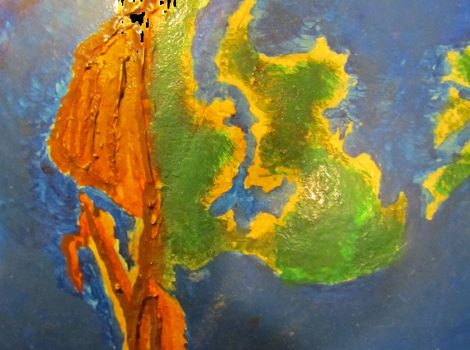Types of Government

What is government? There are several definitions in both Merriam-Webster and Dictionary.com, but it boils down to the person or people governing a country based on the authority and power to make and enforce the laws; and, determine guilt and punishment. For example, in the US today, most citizens classify the government type as a democratic republic. The authority to establish and enforce laws transferred from the governed to elected representatives and, based on the established rules of the constitution, they have the power to enact, enforce and adjudicate within these bounds. (Note: we can use several other classifications and subclassifications to define the US government.)
When I started developing the World of Eracrosi, Wikipedia did not exist and would not be launched for another six years. After reading over the list of eighty different types and sub-classifications of various governments, I am glad I didn’t have the option to use Wikipedia.
Plato suggested three basic types of government, and one or more decayed forms of each. The basic types are the rule of one, a few, or many. For the first type, the rule of one, the best person for the job would rule. But, he predicted the rule of one turning to a tyranny. The rule of a few would be the brightest and most noble of their society, while the decayed version would be in the form of an oligarchy; rule by those few with the wealth and power to dominate the citizenry. The rule of the many would be the ideal democracy, the decayed version devolving into mob rule or anarchy. Simple enough but too lean a distinction for my world.
Most of the table-top role-playing games had sections on developing a campaign for the players. Our group had been using Rolemaster Second Addition (now called Rolemaster Classic) for years. The rulebook, Character Law & Campaign Law, had an excellent section on developing a campaign, including a section on types of government. There were even random generation tables for selecting the government type. The book listed the ten government types below (using my interpretation of their description.)
- Anarchy – no government – mob rule.
- Clan – authority derived from elders and tradition, the power held by the clan leader or war chief.
- Democracy – the people have a vote, thus power and, in a true democracy, the authority.
- Dictatorship – power and authority held by a single person (according to my dad, our family was a dictatorship, but I think he derived a lot of his power from mom.)
- Feudal – this is more a system of power and authority distribution than a true type. I classify it as a sub-set of another type. In this system, everyone owes fealty to someone above him until you get to the king or governing church or council. As an example, let’s look at a kingdom. The king gives land, power and authority to his dukes to rule their duchy. They swear fealty to the king and pay him taxes and provide men for his army. The duke grants lands, power and authority to the count; who swears fealty to the duke and pays him taxes and provides men. The general populace has no power or authority but they pay heavy taxes to support the chain.
- Monarchy – The king (or whatever other title your land uses) has total power and authority
- Oligarchy – Rule by a few, the proclaimed elite. It could be the richest, the strongest, the smartest, the most cunning or a combination. But, it is a few.
- Republic – Representatives elected by the people, supposedly acting for the people. Representatives hold the power, but the authority comes from the people.
- Theocracy – Clerical leaders of the community hold local power, but the authority and true power is in the hands of the head of the nation’s religion.
- Tribe – a group of clans give the authority to a tribal leader. The clans hold power and advise the leader through a council of elders.
There is an obvious missing government type for fantasy games… the mageocracy. A government run by one or more mages. Really! How could they leave that one out? If you are a follower of pen and paper roll playing games, you might remember MERP, Middle Earth Role Playing. The Tolkien Estate approved the game system. They licensed the development and sale of the MERP game to Iron Crown Enterprises, ICE, the same company that developed and sold Rolemaster. Did they miss all the powerful mages ruling lands in Middle Earth? Oh well, I digress.
Last time I said I would discuss the MAJOR mistake I made while developing my first city.
I did not like the limitations of the listed government types. I wanted something more complex. I conceived of a government for the land mass as a blend of the clan, oligarchy, representative, and feudal governments with strong influential power within the clergy and the powerful mages.
I started with five Great Families (in my background history of Havinor, the continent, there had been seven kingdoms but the five conquered two of the seven.) They each held limited power and authority within their lands but would meet twice a year to discuss “national priorities.” Under them were ten Major Families. Then came the fifty Lesser Families and 180 Minor Families. Not being satisfied with simple family rule, I developed a set of 21 clans, and topped it off with six political parties. Every family belonged to a clan, but not every clan had a Greater or even Major Family in the clan. Every clan belonged to a political party (although sometimes a family would not go along with the party politics.) I had a list of every family, clan, and party name and their clan and party symbols or crests. I even designed a flag or pennant for every Greater and Major Family.
How in the world did any laws get enacted? It was a long process. Representatives from each family (often the head of the family) would meet with their other clan members to select a weighted number of representatives for their political party. Clan representatives would meet with the other members of their political party to select the party representatives. The percentage of the total population in the party determined the number of representatives for the party. Each party would also have votes based on the Family status within the party, adding more votes for each Greater (5); Major (4); Lesser (2); and Minor (1) family aligned with the party.
Still not convoluted enough. The clergy and magic using parts of the society needed some power. I needed to develop deities. I decided on a pantheon of Greater through Minor deities. The high cleric of each of the six Greater deities would have votes equal to the number of large temples within the nation. And, finally, each school of magic would have a vote (the largest University of the Magical Arts, Scaramount, had twelve schools of magic on their island campus.)
I am a logical person most of the time. I contemplated the levels of intrigue and corruption possible. The five Great Families claimed “ownership” of the land dividing it into five sectors. But, the clans had families spread throughout the land. Wealth of the families shifted for Lesser and Minor Families based on the actions of their clan and party (the Greater and Major Families were too powerful to move up or down.) The clans were static, but the clans shifted between parties at will.
I imagined scenarios of the government in action… I had made a mistake making everything so intricate. Before the first game session, I decided the government was already in turmoil and on the brink of falling apart. This added spice to the backstory of the game.
Since the story for the game was only taking place on this one, isolated continent, I had finished developing the government – for a short time. However, as shipbuilding advanced, and the people discovered other lands, developing the governments started again for each new land found. Before long the world had empires, kingdoms, princedoms, feudal systems, clans, tribes, theocracies, a mageocracy (run by witches and warlocks,) a true democracy, a couple confederations of free city-states, and a few places where anarchy reigned.
In a story, the politics of a nation can influence the characters and often does, but, in a game, the politics of the nation will influence the characters.
Describing the government type only gives you an idea about the rule of law in the nation or city. The type is not the only governing factor affecting your characters.
The laws established by the rulers and the level of enforcement are also important. Is it legal to serve alcohol or recreational drugs? Is prostitution legal? Is not paying taxes treason? Does every city, town, village and hamlet enforce the rules? You need to think about this if only for consistency of the story. We could consider a government which strictly enforces the laws of the land as having a high law level; even if there were only a few laws. But, if the king makes a daily proclamation, and they only enforce it in the castle, when he is watching, the kingdom has a low law level. Of course, if the land is under mob rule, there may be no laws or law level to worry about. When anarchy rules don’t expect civilized behavior.
How are the laws enforced? If it is against the law to use magic to impersonate someone else, are there mages or some other people capable of discovering the magic is being used illegally? Is it common for a hamlet to have a sheriff, does the elder assign a rotating watch, or is every member of the hamlet responsible to enforce the laws? Do villages have a garrison or “police force?” Does the king have “secret agents” to keep an eye out for treason?
How are guilt and punishment determined? Do the king’s agents have a license to kill? Do the city guards walk around armed and armored or do they only carry a whistle and nightstick? Do certain crimes require judgment by the king or high court or is the local noble allowed to determine innocence or guilt and the level of punishment? Do the laws determine the punishment for a crime or is each one considered independently at the will of the judge?
Since the world building discussion is supposed to be about the World of Eracrosi, and this post about development of the government of Havinor, the answers to the above questions need to be addressed.
In the five sectors of the continent the law level varied from high to medium, from east to west. The variation within the sectors was greater. Alcohol and prostitution were legal. Magic was restricted within the cities and enforced by the local mage guilds. Cities and towns had garrisons with armed and armored men patrolling the streets day and night, investigating agents and spies; villages had knights and their squires; and hamlets had an elder to enforce the laws. The local leader presided over most crimes, but they sent high crimes to the city for the appointed judges to rule on innocence or guilt. The only punishment the local noble could not decree was death; only the appointed judge of the high court of the sector could hand down the death sentence. (Although, few rapists lived long enough to be taken prisoner… rape was rare in Havinor.)
Next time I will discuss the development of the city of Treans.
